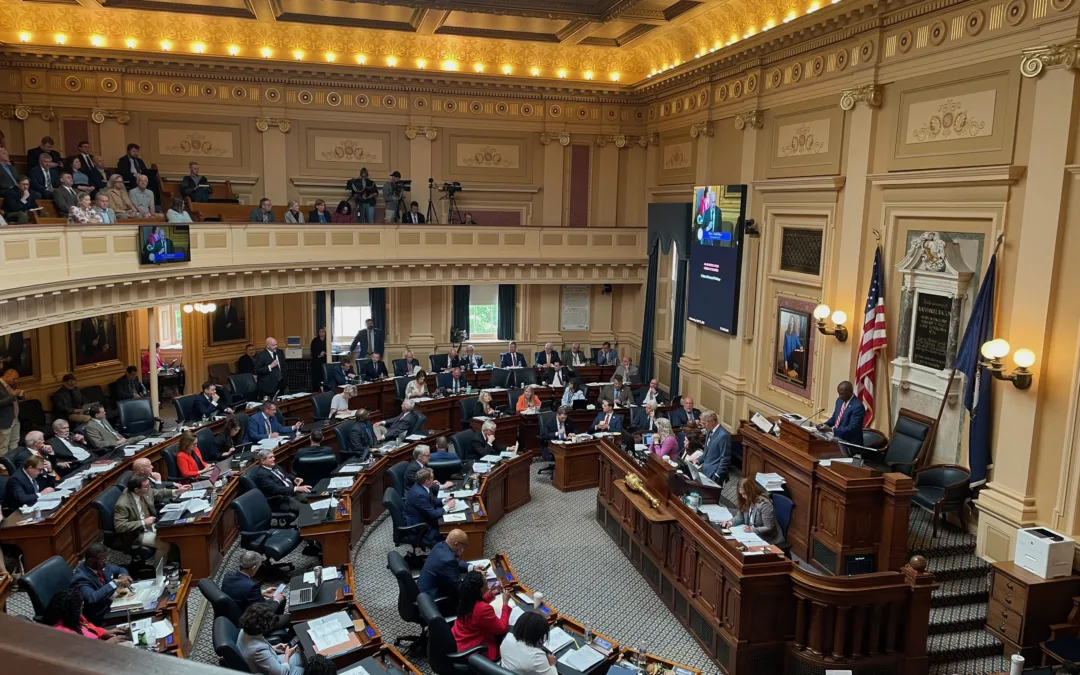
Turning Point Suffragist Memorial in Lorton (Image courtesy of memorial)
The fate of the Equal Rights Amendment hangs in the balance, but Virginia women continue pushing forward.
LORTON—Two years ago today, on Jan. 27, 2020, Virginia became the 38th state to ratify the Equal Rights Amendment (ERA).
But why is that important? We weren’t the first. We weren’t the 50th. However, Virginia’s decision was the crucial step needed to move the ERA forward after almost a century—and the commonwealth also played a role in the turning point of women’s suffrage in America.
The ERA and Women’s Suffrage
The Equal Rights Amendment is a proposed amendment to the US Constitution that would guarantee equal legal rights for all American citizens regardless of sex. It also seeks to end the legal distinctions between men and women in terms of divorce, property, employment, and other matters.
Authored by Alice Paul, a suffragist and women’s rights activist, the Equal Rights Amendment made its debut on the American political stage in 1923. Almost 100 years later the fate of the ERA still hangs in the balance, with women like Patricia Wirth, former CEO of the Turning Point Suffragist Memorial Association, keeping the flame alive.
Wirth worked tirelessly on a special project, bringing the Turning Point Suffragist Memorial to Lorton in May 2021. The memorial located within Occoquan Regional Park, now operated by NOVA Parks, highlights the story of the suffragist movement and the women who made it happen—women like Paul. According to the memorial’s website, the objective is to educate, inspire, and empower present and future generations to remain vigilant in the quest for liberty, freedom, and equal rights.
“Information about the suffrage movement is not contained in our history textbooks, our school textbooks,” Wirth said. “There’s very, very little—if any—information about the movement. And yet, there were millions of women who fought for over 72 years to get the vote.”
Nowadays, women still fight for equal rights.
The Woman Behind the ERA
Writing the ERA wasn’t suffragist and activist Paul’s first time in the national limelight.
Born in New Jersey to Quaker parents in 1885, Paul spent decades of the 20th century fighting for women’s rights. She founded and led the National Woman’s Party, organized women’s picketing events in America, and famously burst at least 48 windows during her time in England—all in the name of women’s suffrage.
In 1917, demonstrations in Washington, DC, were met with jail time for Paul and other suffragists. The women, formed as Paul’s group Silent Sentinels, picketed the nation’s capital in protest of then-president Woodrow Wilson. They called out the nation’s leader for supporting democracy abroad, but not for all Americans. While some of the banners the group printed simply asked what Wilson would do for the suffrage movement, others called him “Kaiser Wilson,” comparing the 28th president to Kaiser Wilhelm II of Germany.
Crowds gathered around the women, spilling into the streets of DC. Police made arrests over the claims of “traffic obstruction.” Many women refused to pay fines or admit guilt, instead going to jail or prison. Some of the women at the DC protests were sent to the Occoquan Workhouse in Lorton near the present-day Turning Point Suffragist Memorial. According to Wirth, Paul wasn’t among them, but rather jailed elsewhere.
The Night of Terror in Virginia
(Trigger warning: This section includes some graphic historical details that may be difficult for some readers.)
Suffragists’ accounts from the Virginia prison were highly disturbing. The Occoquan Workhouse—the 1910 brainchild of Theodore Roosevelt as a place for minor criminals to develop useful skills—was a living nightmare for the women imprisoned there. The Los Angeles Times reported that the suffragists were detained, beaten, kicked, choked, stripped naked, chained to the bars in a workhouse cell, stabbed with a protest banner stick, and force-fed in retaliation against hunger strikes.
“One woman was thrown into her cell. There was already someone in there, one of the other women that had been arrested that day. When they threw her in, her head hit the foot of the bed, which was an iron footboard, and knocked her unconscious. Her cellmate thought she was dead because she didn’t move, and she had a heart attack,” Wirth said. “They couldn’t get any medical assistance. They couldn’t get anything. Well, this became known as ‘the Night of Terror.’”
News spread of the treatment the women endured, gaining the public’s attention. When they were released, the once-heckled suffragists had a positive national following. The momentum pushed America toward the 19th Amendment, which granted women the right to vote in 1920. Just three years later, Paul penned the Equal Rights Amendment, an issue she continued to press until her death in 1977.
The ERA Ratification Process Today
It took 49 years for the first state to ratify the amendment—that was Hawaii on March 22, 1972. An additional 21 states also ratified the amendment that year. Indiana became the 35th state to approve the amendment in 1977 before the case went cold for 40 years.
In 2017, Nevada chose to ratify the ERA, followed by Illinois the next year. Then came Virginia in 2020, casting a historic vote in favor of ratification. The vote came after Democrats won the majority in both the House of Delegates and the Senate, making the ERA a legislative priority in the 2020 General Assembly.
At the time, Democratic Sen. Mamie Locke said: “We must begin to see a world without discrimination of any kind. Equality based on sex is not just good for women, it is good for society.”
Virginia’s decision gave the ERA the two-thirds majority needed before an amendment can make its way onto the US Constitution. Currently, that means 38 states would need to ratify the proposed change—in the ERA’s case, Virginia was the 38th state.
However, just because 38 states ratified the ERA doesn’t mean someone will take a ballpoint pen to the 1787 document. At least, not any time soon.
“There are a lot of people that think that the Equal Rights Amendment was passed,” Wirth said. “There are a lot of people that think that women in fact are treated equally, but we’re not.”
There’s also some fear over potential backtracking. Over the course of the last 50 years, five states—Nebraska, Tennessee, Idaho, Kentucky, and South Dakota—voted to rescind or withdraw their ratification of the ERA. According to the Equal Rights Amendment’s website, a project of the Alice Paul Institute, it’s likely that the actions would not affect the number of states that ratified.
Historically speaking, two states passed resolutions to rescind their ratification of the 14th Amendment, while two others originally rejected and later ratified the amendment. In 1868—the ratification year of the 14th Amendment—those four states were all included in the total ratification number.
While the ERA’s fate will simply have to play out, one thing’s for sure: There’s no end in sight for women fighting for equality—not 100 years ago, and not now.
“The reality of it is, they were us,” Wirth said. “They were us, just in another time. And they were dealing with issues in the way that was conventional for them at the time, but they were not any the less passionate about wanting to achieve what they wanted to achieve.”
Amie Knowles reports for The Dogwood. You can reach her at [email protected].
Politics

Youngkin, Democrats to start over on budget talks
The Republican governor stood with Democratic leaders in the General Assembly on Wednesday in a bid to ease tensions over their budget debate....

VIDEO: Domestic abuse victims speak out against the gun law bills Gov. Glenn Youngkin vetoed
Senate Bill 47 and House Bill 46 aim to close the loophole that allows offenders to transfer their firearms to someone else instead of relinquishing...
Local News

Virginia verses: Celebrating 5 poetic icons for National Poetry Month
There’s no shortage of great writers when it comes to our commonwealth. From the haunting verses of Edgar Allan Poe, who found solace in Richmond's...

Join the fun: Recapping Family Literacy Night’s storybook adventures
When’s the last time you read a book aloud with a loved one? If it’s difficult to answer that question, then maybe it’s time to dust off that TBR...





